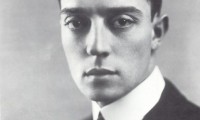Marlon Brando, “Screen Test” (1947)
This video of a young Marlon Brando gets particularly interesting around 3:50. He stands there, a rising star in the theatre, perhaps never before tested by the screen, perhaps eyed by the cameras for the very first time.
We see him follow the instructions of a disembodied female voice that bids him turn, show his profile, now can they see the back of his head?
He follows these commands easily, supressing a grin, innocent of any criticism that could be levelled against his beauty. He knows simply, without shame or modesty, exactly what he’s got, and that it’s something no one could find any flaw in. This is not irritating or sickening, but wonderful! We agree with him. Darling, you’re incredible! You’re absolutely right!
Have you ever seen pride expressed as sublimely as it is here? He makes the sin seem like a charming, irresistably beckoning quality; just a happy, off-hand way of sharing the gifts of God’s great earth. If this was all we knew of humans, we’d surely classify pride among the seven heavenly virtues.
But so when is pride a virtue? How does he effect this trick? Can beautiful people get away with anything, like Dorian Gray; be forgiven what the rest of us cannot? Can beauty turn what’s sour sweet? Or is this not vanity on display at all? Is it just the wholesome confidence of an apple-seller who plucked good apples from the orchard that day?
– Sheila Heti









